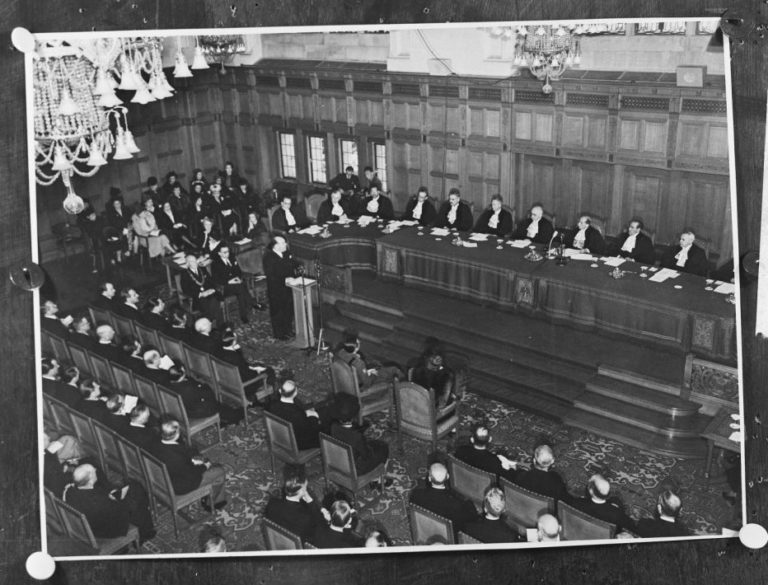When we were young, my sisters and I would have arguments that sometimes ended in scuffles. Our parents then tried to explain to us that there are better ways to solve quarrels and conflicts.
Like people, nations also have disagreements. If they are resolved by force, the result is more than a few bruises or scratches. These quarrels can lead to wars. One of the institutions created to prevent wars will celebrate its 75th anniversary in April 2021: the International Court of Justice.
Conflicts between countries
Disputes between countries can arise for many reasons, among them the correct determination of borders. Not only on land, but also at sea, where fishing rights and the potential for extracting raw materials and minerals are often sources of disagreement.
Another ground for conflict may be that one country thinks that another country is not complying with the provisions of an agreement or treaty.
International Court of Justice
As the court is an organ of the United Nations, the judges are elected by the General Assembly and the Security Council.
Princess Juliana and Prince Bernhard were present, as was the Mayor of The Hague, De Monchy, who was also one of the speakers. In his speech, he recalled the hardships the residents of The Hague had suffered during the war and expressed the municipality’s delight at the arrival of the International Court of Justice.
The judges of the new Court all took the oath. They were not at full strength, as one judge from Chile had not yet managed to reach The Hague. The Algemeen Dagblad reported: “Fourteen eminent jurists in black robes with lace bibs…”.
Whaling
An example of a case considered with by the International Court of Justice is one that has to do with whaling, which is regulated by an international treaty. In a nutshell, countries have agreed to catch whales only for research purposes.
In 2010 Australia brought an action against Japan. The accusation: The number of whales caught by Japan was too large to be only of scientific interest, and a large part of the whaling was done for commercial purposes . In 2014, the International Court agreed with Australia that the number of Japanese scientific research publications was disproportionate to the number of animals killed.
Unfortunately, the Court’s power is limited if not all parties abide by the ruling. To this day, Japanese fishermen still catch whales, and Japan withdrew from the whaling treaty in 2019.
If you want to know more, the International Court of Justice explains its purpose and workings in this film.
Film about the opening (Dutch commentary).
The Hague calls itself the city of peace and justice. Do you want to know what that means? Take your family or friends on the ‘Peace and Justice’ bike tour.






